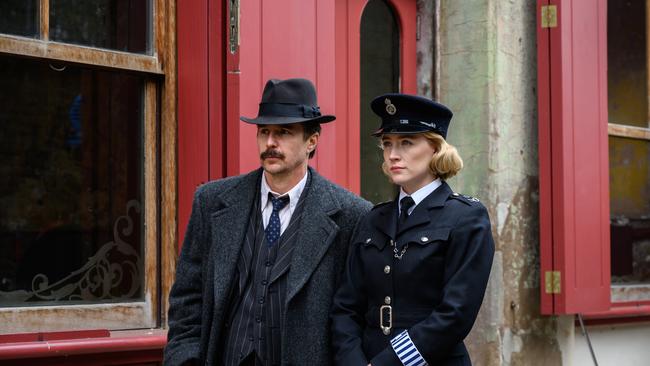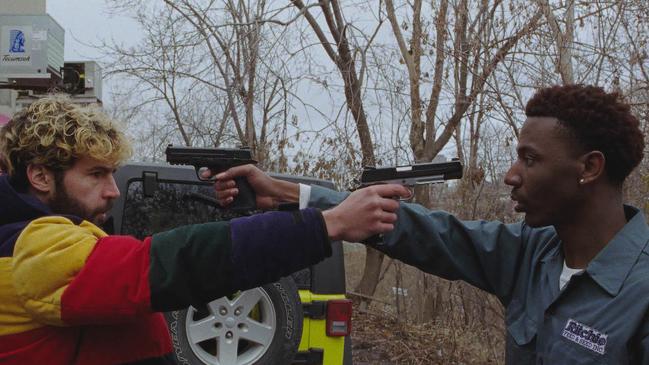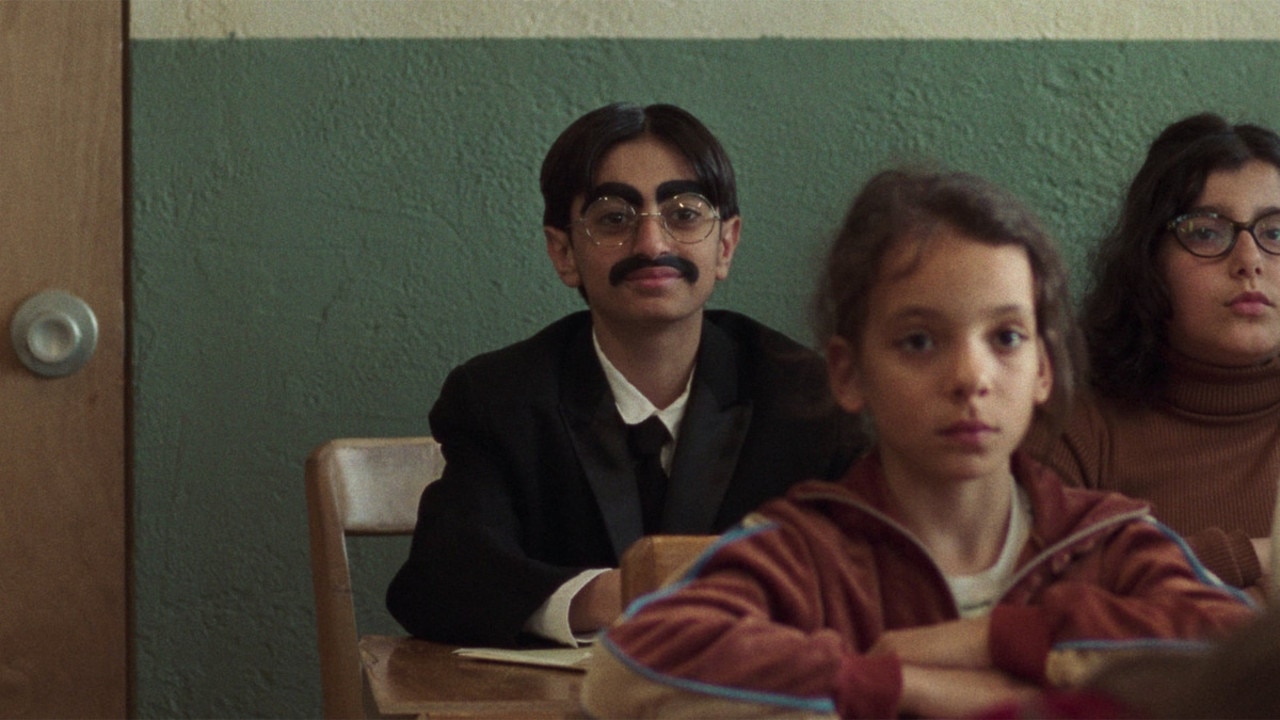Delicious salute to classic British mystery, See How They Run
Even if you haven’t seen Agatha Christie’s The Mousetrap – the focus of this film – there’s a great deal to savour in this parody

See How They Run (M)
In cinemas
★★★★
Agatha Christie’s celebrated play, The Mousetrap, premiered on October 6, 1952. Richard Attenborough and his wife Sheila Sim played the leading roles, and a clause of the contract signed at the time guaranteed that no film could be made of the play until the conclusion of its initial theatrical run. The longest running play in theatre history is still running 70 years later (after a brief hiatus when St Martins Theatre was closed from March 2020 to May 2021 because of Covid). The last time I was in London, my wife and I went to see the play which, as you might expect, is a delightfully retro throwback to the theatre of my youth. The audience is asked not to reveal the twist at the conclusion of the drama.
When the play opened, Christie predicted it would run for eight months and it’s interesting to compare The Mousetrap with Witness for the Prosecution, a Christie play that opened a year after The Mousetrap in 1953 that was superbly filmed by Billy Wilder in 1957, with memorable performances from Charles Laughton and his wife Elsa Lanchester.
Christie was fond of taking the titles of nursery rhymes for her books and plays (Hickory Dickory Dock, One Two Buckle My Shoe etc) and The Mousetrap, which was apparently inspired by a real-life murder case, originated as a radio play titled Three Blind Mice. That’s where the title of first-time director Tom George’s engaging comedy-thriller See How They Run has its origins (not from the lyrics of The Beatles song, Lady Madonna).
The film opens in 1953 as the play, with its original lead actors Attenborough (Harris Dickinson) and Sim (Pearl Chanda), is celebrating its 100th performance. The early scenes are narrated by Leo Kopernick (Adrien Brody), a disagreeable, black-listed Hollywood director who has been hired by producer John Woolf (Reece Shearsmith) to make a film version of the play for his Romulus company – soon after the successful production of The African Queen (which is mentioned several times) and John Huston’s Moulin Rouge (which isn’t). The financial backers want Grace Kelly as the female lead. It’s worth noting that Woolf really was an important British film producer at the time and his film company was, indeed, called Romulus.
Gay screenwriter Mervyn Cocker-Norris (David Oyelowo) has written a script apparently faithful to the play; Kopernick is unimpressed and wants to inject more action into the drama, including a murder in the first reel. “You’ve seen one whodunit you’ve seen them all,” he states, derisively. Of course, this is all a moot point because the play can’t be filmed until it finishes its West End run.
During the celebratory evening, Kopernick quarrels with Attenborough, Cocker-Norris and Woolf and, as the self-described “most unlikeable character” in the story, he winds up as the first victim, his body placed on the lounge featured prominently in the play’s single set. Scotland Yard investigators are soon on the scene; alcoholic Inspector Stoppard (Sam Rockwell) and conscientious rookie Constable Stalker (Saoirse Ronan), who notes everything down in a little book but is a bit too eager to make accusations against one or other of the suspects.
One of the delights of Mark Chappell’s original screenplay is the way it teasingly refers back to the play itself. This will make the film somewhat richer for those who have seen The Mousetrap – the references to it are pretty clever – but even if you haven’t there’s a great deal to savour in this tasty parody of classical British mystery plays and movies.
American actor Rockwell, his English accent seemingly impeccable, is a hoot as the not very reliable inspector while Ronan, in one of her best-ever roles, is an absolute delight as the keen but somewhat wayward Stalker. The supporting cast is excellent – though Dickinson is rather miscast as Attenborough, who was noticeably a short man while Dickinson is rather tall. Shirley Henderson contributes a lovely late-entry cameo as Agatha Christie herself.
The plotting, as noted, is clever and knowing; perhaps the dialogue could have been a little sharper, though there are some chucklesome lines, for example when producer Woolf is described by Attenborough as “a man of his word – he went to Eton!” Stage-and-movie-struck Stalker is at one point admonished by Stoppard, who reminds her that she’s conducting a murder investigation, not researching an article for (venerable British film magazine) Sight and Sound.
An additional element of interest is the revelation that this murder investigation is taking place at the same time as Scotland Yard is involved with the Rillington Place murders: in 1970 Attenborough played the serial killer in 10 Rillington Place.
Visually the film evokes London in the early 1950s pretty effectively, despite a rather strange use of split screen at times. George and Chappell are faithful to the spirit of Christie – there won’t be many viewers who are able to guess the identity of the murderer before the final denouement.
On the Count of Three (MA15+)
In cinemas
★★★½
On the Count of Three is a black comedy and not at all a bad one. It centres on the friendship of two 30-somethings, Kevin (Christopher Abbott), who is white, and Val (Jerrod Carmichael, who also directed), who is African-American. They seem to be a hopeless pair, with plenty of troubles and few prospects. Val has a menial job he hates, and we see (in flashback) that’s he’s already attempted suicide in the company toilet and failed. Kevin, meanwhile, has recently escaped from a mental hospital – with Val’s help – and though he seems rational most of the time he has serious anger issues. With nothing left to live for, or so they believe, the pair have decided to end it all by shooting one another “on the count of three” in a parody of a Mexican stand-off.
The film opens with this scene, but Val has second thoughts and the friends decide to postpone their deaths and live for one last day. Val goes to see his estranged father, who owes him money; subsequently he also pays a visit to his pregnant girlfriend (Tiffany Haddish) who is furious with him because he seems to have abandoned her and hasn’t answered any of her calls. Kevin, meanwhile, seeks revenge on Dr Brenner (Henry Winkler), the psychiatrist he blames for ruining his life. Dr Brenner is out when the friends visit his clinic, so the pair while away their last day in companionable enjoyment.
Very well acted, with a refreshingly dark sense of humour and briskly paced, the film impresses on a number of levels.
These two outsiders are the closest of friends, and their friendship – characterised by cheerful bickering and arguing – is the core of this well written and acted black comedy.





To join the conversation, please log in. Don't have an account? Register
Join the conversation, you are commenting as Logout